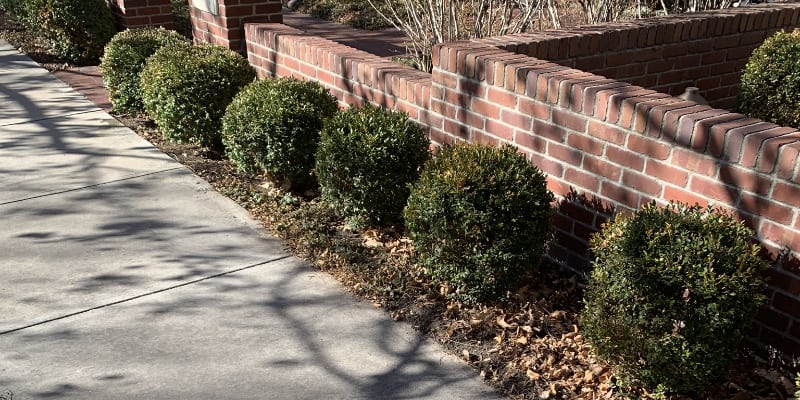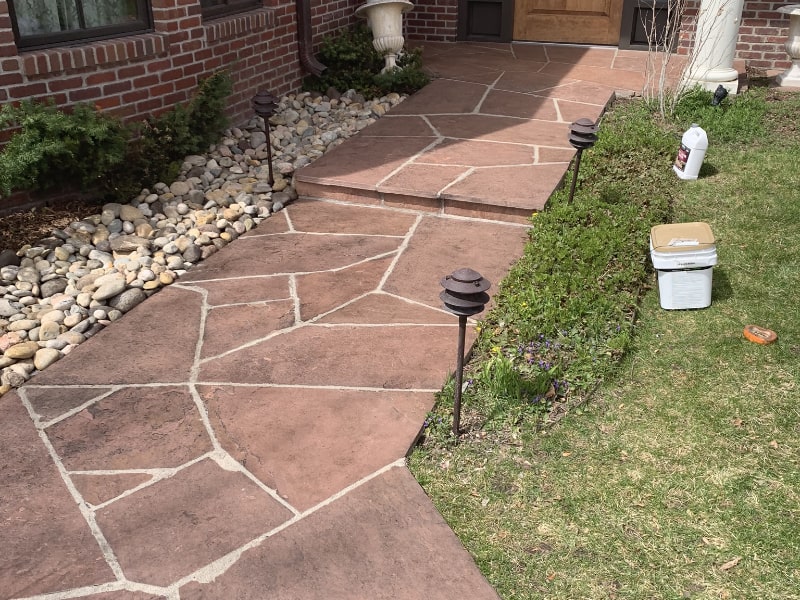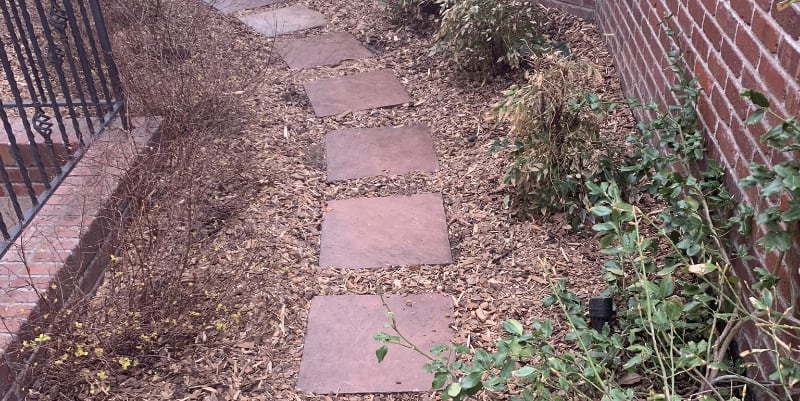Landscaping Project in Cherry Creek
This landscaping refresh was completed in the fall of 2019 near Colorado Boulevard and 6th Street in Denver.
The homeowner had a few requirements that they wanted us to complete.
Boxwood Plantings
First, neighbors on either side of our customer had boxwoods along the sidewalk adjoining the brick wall in front of their house. Boxwoods are an evergreen shrub, that when mature, look fantastic. They can be styled and shaped and give a real elegant look to the property. Boxwoods also do well in a variety of lighting conditions – including being underneath large trees as was the case for our customer.


Additionally, when properly spaced, boxwoods can provide good cover for what they’re in front of – in this case a brick wall.
Here are the boxwoods we planted for our customer. You can see that they are smaller than the neighbors plants, but they will get larger and round into shape before too long. We also added mulch around the boxwoods for water retention. To make the boxwoods low maintenance, we installed a drip sprinkler system to ensure they get the right amount of water – at the right volume so as to not overwhelm the new plants.

Flagstone Walkway
The customer also had an existing flagstone walkway that was suffering from abuse by the elements. It was turning black and dirty.
This particular Flagstone path is underneath large trees. While the large trees obviously provide great shade, they also can damage flagstone. As leaves fall off the branches, they land on the flagstone. Acid within the leaves causes damage and staining to flagstone as the leaves decay.
In addition the flagstone path being stained and looking dirty, the seams were in a state of total disrepair. The original installer used concrete grout – and that grout was crumbling in places, and raised and popping out in other locations.
The flagstone needed some serious TLC.
Our Flagstone Path Restoration Process
Getting the flagstone path something that this homeowner would be proud of again was a painstaking process.
First, we used a screwdriver to remove all of the grout in between the stones on the walkway.
Powerwashing came next. We were able to remove most of the damage caused by the decaying leaves and the associated stains that it left on the flagstone.
Next, we used a polymer based sand between the flagstone slabs. While the sand looks like concrete, it provides much better performance. It doesn’t expand and shift like concrete grout. It is also left susceptible to the effects of water than concrete.
Now that everything was in place, we sealed the walkway. The sealant we use is applied with a hand sprayer. For a semi-gloss look, we applied two coats of sealant. Not only does the flagstone sealer provide a nice glossy shine, it also tightens up the seams and helps to keep everything in place.
You can see the results of our flagstone walkway restoration below.

Flagstone Pads
Also part of this project was the installation of 2′ x 2′ flagstone pads. We cut the flagstone to the size desired by the homeowner. You can also see that we installed bark mulch along with the pads in the photo below.

The flagstone pads lead to the walkway we mentioned earlier. Where the pads meet the walkway, you can see that we have a cobblestone bed which starts at the downspout next to the walkway near the top of the photo. This cobblestone streambed not only looks fantastic and provides character to the front of the house, it also helps to prevent erosion from downspout runoff. This streambed replaced unsightly ground cover that was in place before we started the project.

How Long Will This Last?
Many years. With the more stable polymer grout and sealant, this walkway will be able to stand the test of time for many years before needing to be powerwashed and resealed – even with the effects of the elements.